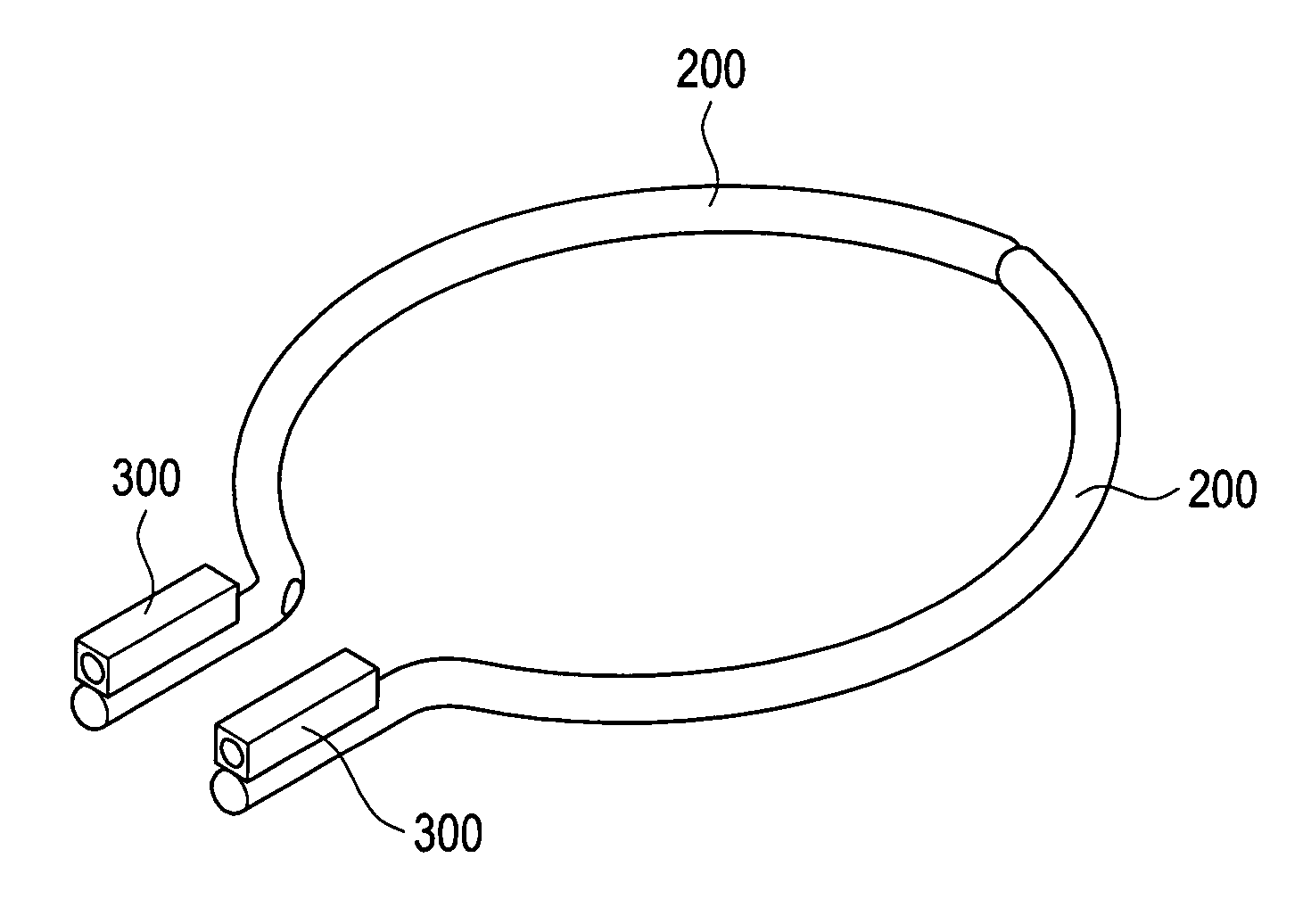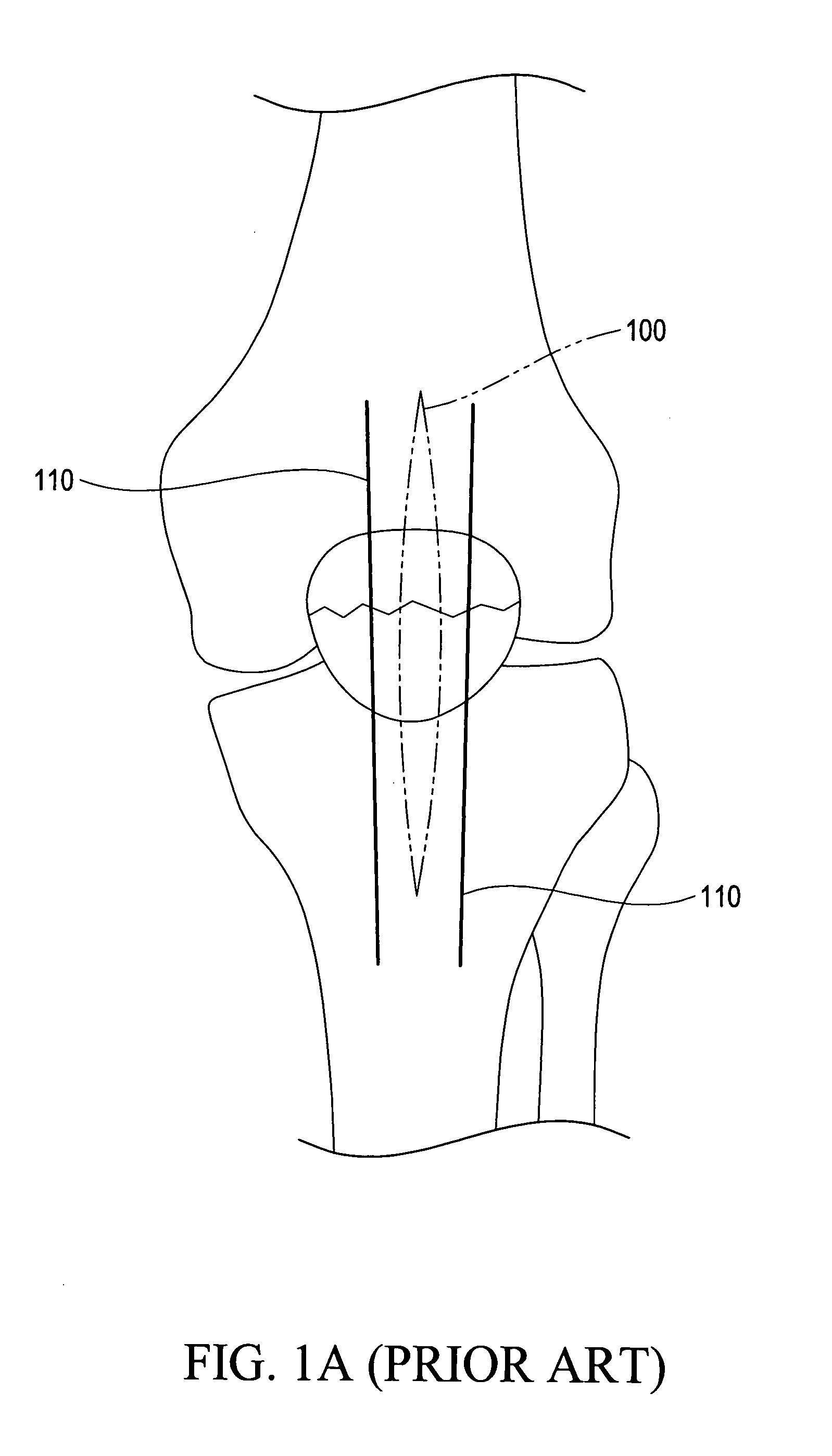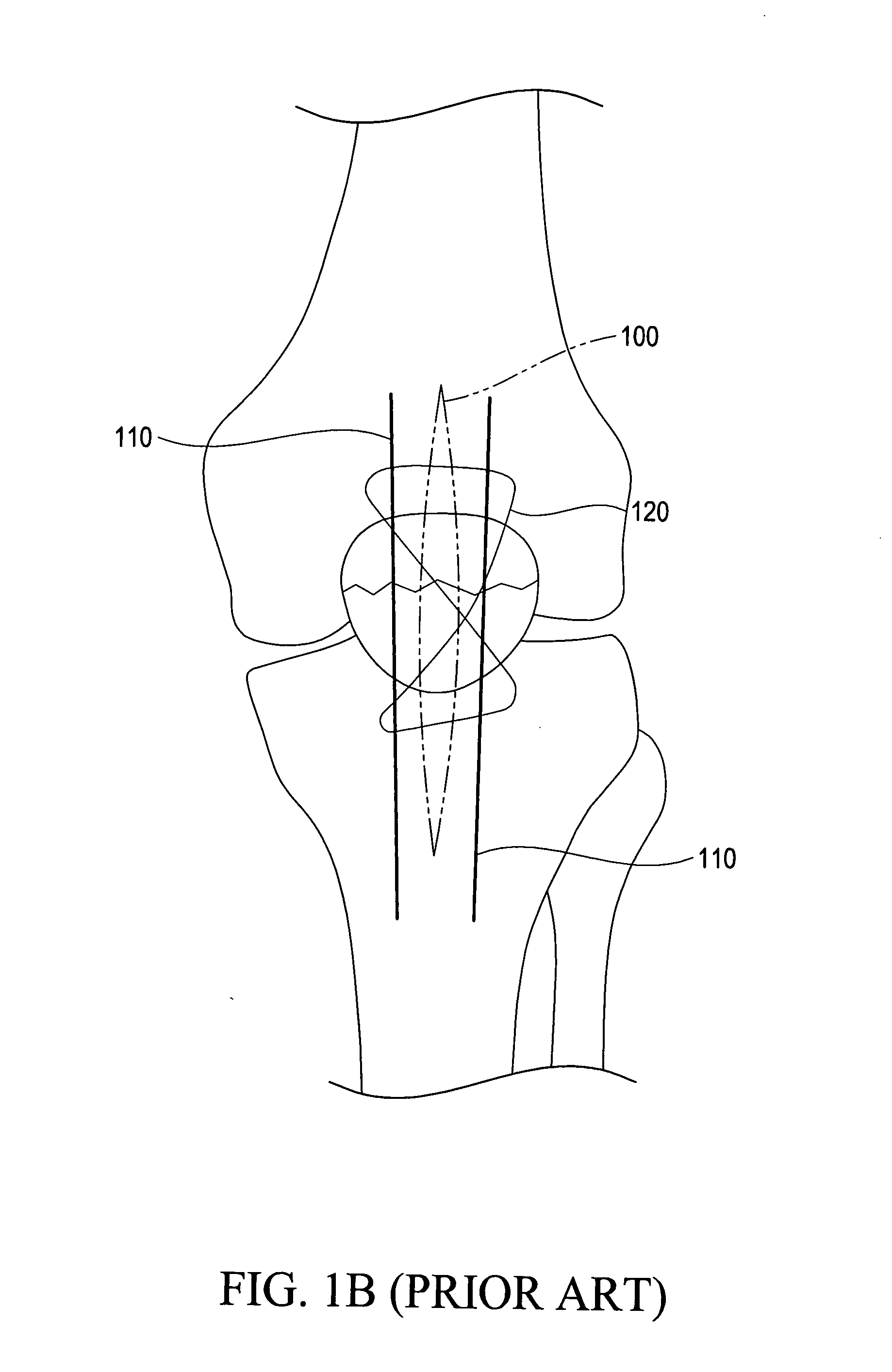Minimally invasive skeletal fixation device
a skeletal fixation device, minimally invasive technology, applied in the field of minimally invasive skeletal fixation devices, can solve the problems of joint stiffness, cast/splint application to immobilize adjacent joints, bone fractures, etc., and achieve the effect of small incision size, simple structure and minimal siz
- Summary
- Abstract
- Description
- Claims
- Application Information
AI Technical Summary
Benefits of technology
Problems solved by technology
Method used
Image
Examples
first embodiment
[0019]Referring to FIGS. 2A and 2B, which are respectively a perspective view and an exploded view of a minimally invasive skeletal fixation device constructed in accordance with a first embodiment of the present invention, the minimally invasive skeletal fixation device comprises two curved tubes 200 and two positioning members 300 with which an incision made in a surgical operation for treating patella fracture of a patient can be made extremely small for fast recovery so as to allow the patient to return normal movement in a short period.
[0020]Each curved tube 200 is in the form of a hook like curved tube (which includes a curved section and a straight section). Each curved tube 200 has a curvature not limited to any specific value. Each curved tube 200 comprises a connection section (namely the curved section) 210 and a handle section (namely the straight section) 220. Each connection section 210 comprises a hollow tubular portion having two ends respectively forming a first ope...
second embodiment
[0023]Referring to FIG. 3, which shows an application of a minimally invasive skeletal fixation device in accordance with a second embodiment of the present invention, the minimally invasive skeletal fixation device of the second embodiment is substantially identical to that of the first embodiment and a difference between the two embodiments resides in that in the second embodiment, the positioning members 300 are respectively coupled to the handle sections 220 of the curved tubes 200 in a removable manner (for example, the positioning members 300 being coupled to the handle sections 220 of the curved tubes 200 with a pivotal joint or a threaded connection), whereby the positioning members 300 allow for adjustment of angles thereof. Thus, the minimally invasive skeletal fixation device according to the second embodiment of the present invention allows for flexible adjustment of the installation sites of the K-pins 620. As compared to the known processes of surgical operation, the p...
third embodiment
[0024]Referring to FIG. 4, which shows a perspective view of a minimally invasive skeletal fixation device in accordance with a third embodiment of the present invention, the minimally invasive skeletal fixation device of the third embodiment is substantially identical to that of the first embodiment and a difference between the two embodiments resides in that in the third embodiment, a pad 320 (which comprises a board in the embodiment illustrated, but can be of any other desired shape) is provided between each curved tube 200 and each positioning member 300. With the arrangement of the pad 320 between each curved tube 200 and each positioning member 300, the curved tube 200 and the associated positioning member 300 are more surely set at different horizontal planes to facilitate extension of twisting of the wire member 610 around the K-pins 620 for fixation.
PUM
 Login to View More
Login to View More Abstract
Description
Claims
Application Information
 Login to View More
Login to View More - R&D
- Intellectual Property
- Life Sciences
- Materials
- Tech Scout
- Unparalleled Data Quality
- Higher Quality Content
- 60% Fewer Hallucinations
Browse by: Latest US Patents, China's latest patents, Technical Efficacy Thesaurus, Application Domain, Technology Topic, Popular Technical Reports.
© 2025 PatSnap. All rights reserved.Legal|Privacy policy|Modern Slavery Act Transparency Statement|Sitemap|About US| Contact US: help@patsnap.com



